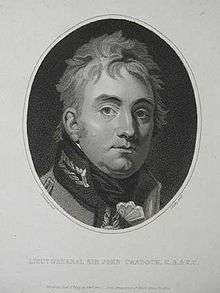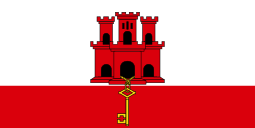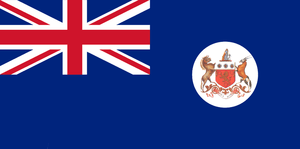John Cradock, 1st Baron Howden
| General The Right Honourable The Lord Howden GCB | |
|---|---|
 | |
| Governor of the Cape Colony | |
|
In office 1811–1814 | |
| Monarch | George III |
| Preceded by | The Earl of Caledon |
| Succeeded by | Lord Charles Somerset |
| Personal details | |
| Born | 11 August 1759 |
| Died | 26 July 1839 (aged 79) |
| Awards | Knight Grand Cross of the Order of the Bath |
| Military service | |
| Allegiance |
|
| Service/branch | British Army |
| Rank | General |
| Commands | Madras Army |
| Battles/wars | Irish Rebellion |
General John Francis Cradock, 1st Baron Howden GCB (11 August 1759 – 26 July 1839) was a British peer, politician and soldier.
Life
He was son of John Cradock, Church of Ireland Archbishop of Dublin.[1] In 1775 he was admitted to St John's College, Cambridge.[2]
In 1777, he was appointed a Cornet in the 4th Regiment of Horse, which in 1779 he exchanged to become an Ensign in the Coldstream Guards, and in 1781 he was promoted a Lieutenant with the rank of Captain. In 1785 he purchased a commission as a Major in the 12th Dragoons, exchanging this in 1786 for a post in the 13th Foot, where he was appointed Lieutenant-Colonel in 1789.
He commanded the 13th in the West Indies in 1790, and served a second time in the West Indies commanding a battalion of grenadiers in 1793, where he was wounded at the reduction of Martinique and appointed the aide-de-camp of Sir Charles Grey, receiving the thanks of Parliament for his services.
In 1795 he was appointed Colonel of the 127th Foot, and placed on half-pay when that regiment was reduced in 1797. He was appointed Major-General in 1798, and served in the Irish Rebellion of 1798 as Quartermaster-General in Ireland, seeing action the Battle of Vinegar Hill. He accompanied Cornwallis in his campaign against the French forces landed in Ireland, and was severely wounded at the Battle of Ballinamuck.
Cradock entered the Irish House of Commons for Clogher in 1785. In 1790, he stood as Member of Parliament for Castlebar, a seat he held until 1798. He then represented Midleton from 1799 to 1800 and subsequently Thomastown to the Act of Union in 1801. The year before he had been appointed to command the second battalion of the 54th Foot, and again placed on half-pay when that battalion was reduced in 1802. In 1803 he was appointed to the 71st Foot.
In 1801 he was on the staff in the Mediterranean under Sir Ralph Abercromby, seeing action several times and serving as second-in-command of a division in the field. After the surrender of Cairo and Alexandria, at which he was present, he was despatched with a force to occupy Corsica and Naples, but was recalled en route after the Peace of Amiens was signed.
He was then appointed Commander-in-Chief of the Madras Army; after the departure of Lord Lake, he commanded the whole of the forces in the Iberian Peninsula for almost a year. In 1808 he was appointed to command the forces in Portugal, handing over command to Arthur Wellesley on 22 April 1809.[3] From there moved to the command of the 43rd (Monmouthshire) Light Infantry in January 1809, briefly serving as the Governor of Gibraltar later that year.
In 1811 he was appointed Governor of the Cape Colony and commander of the forces on that station, resigning in 1814 and being succeeded by Lord Charles Somerset. He was promoted full general in 1814, elevated to the Peerage of Ireland as Baron Howden in 1819, and to the Peerage of the United Kingdom under the same title in 1831.
The town of Cradock in the Eastern Cape, South Africa, is named after him.
References
- The Royal Military Calendar, Or Army Service and Commission Book, ed. John Philippart. p. 12-14, Vol II of V, 3rd edition, London, 1820. Online edition at Google Books
 "Caradoc, John Francis". Dictionary of National Biography. London: Smith, Elder & Co. 1885–1900.
"Caradoc, John Francis". Dictionary of National Biography. London: Smith, Elder & Co. 1885–1900.
Notes
- ↑ s:Cradock, John (DNB00)
- ↑ "Cradock, [John] Francis (CRDK775JF)". A Cambridge Alumni Database. University of Cambridge.
- ↑ Chartrand, Rene (2012). Oldest Allies - Alcantara 1809. Osprey Publishing. p. 53. ISBN 978-1-78096-895-7.
| Parliament of Ireland | ||
|---|---|---|
| Preceded by Sackville Hamilton Thomas St George |
Member of Parliament for Clogher 1785–1790 With: Sackville Hamilton |
Succeeded by Sackville Hamilton Richard Townsend Herbert |
| Preceded by James Browne Thomas Warren |
Member of Parliament for Castlebar 1790–1797 With: Edward FitzGerald |
Succeeded by Thomas Lindsay Denis Browne |
| Preceded by Benjamin Blake Woodward Richard Hardinge |
Member of Parliament for Midleton 1799–1800 With: Benjamin Blake Woodward |
Succeeded by Benjamin Blake Woodward Hon. Richard Annesley |
| Preceded by Hon. Charles William Stewart William Gardiner |
Member of Parliament for Thomastown 1800 – 1801 With: William Gardiner |
Succeeded by Parliament of the United Kingdom |
| Military offices | ||
| Preceded by James Stuart |
C-in-C, Madras Army 1804–1807 |
Succeeded by Hay McDowall |
| Government offices | ||
| Preceded by Sir Hew Dalrymple |
Governor of Gibraltar (acting) 1809 |
Succeeded by Colin Campbell |
| Preceded by Henry George Grey, acting |
Governor of the Cape Colony 1811–1814 |
Succeeded by Lord Charles Somerset |


